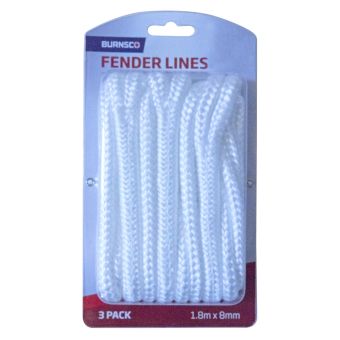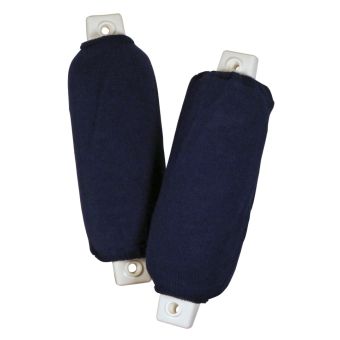One of the beauties of water is that it is generally very forgiving when it comes to much wear and tear – well, certainly compared to the rate your tyres are ground down by constant contact with the road.
But your boat isn’t only going to come in contact with water – there’s going to be plenty of occasions when you want to come alongside a quay or dock, or even another boat and that’s when damage can occur.
Fenders offer a range of options to safeguard your boat above the waterline by using either an inflated, round soft foam or pvc-covered flat padding to absorb the boat’s movement and provide a buffer zone to safeguard both the vessel and the dock or other boats.
Cylindrical fenders (which are often filled with Nitrogen to keep them pressured longer) also come with eyes at either end – compared to buoys which often have just a single eyelet – which means they can be fixed more securely either vertically or horizontally. And flat fenders can be contoured to fit your boat’s shape and store more easily.
So what are the best fenders for your boat? Here’s a quick guide.
- Rafting
If you’re rafting a number of boats together – something seen throughout New Zealand’s coastal waters every summer as boaties enjoy a convivial beer or gin and tonic with their fellow travellers – then you’ll need to protect all the boats concerned at their widest point. Make sure you always carry sufficient fenders for impromptu raft-ups.
- Permanent docks
If you have a regular spot in a marina, then having a fitted dock corner fender and/or a dock wheel in your berth gives you the confidence to slide right on in there even if there’s a breeze or swell.
- Occasional docks
When you’re needing to refuel, tying up for the night somewhere you’re unfamiliar with, or pulling alongside a wharf to take on provisions or passengers, then you need to set your fenders just above the waterline to ensure protection both for you and for the dock while the boat rolls around in any swell. The general recommendation is to go for the largest fender possible – after all the relatively low cost of a fender simply doesn’t compare to repairs to your boat or the wharf. A minimum guide would be 2.5cm of diameter for cylindrical fenders or 5cm of diameter for spherical fenders for every metre of boat length but you might also want to take into consideration the fact that New Zealand weather means you might have to use them in quite heavy chop or swells and, again, the extra size is worth it for the safety of your boat.
For more information on our range of fenders and accessories such as inflation pumps and lines, phone us on 0800 102041, email us, or Livechat with one of our staff via the website.

